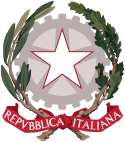
President of the Senate is a title often given to the presiding officer of a senate. It corresponds to the speaker in some other assemblies.

The speaker of a deliberative assembly, especially a legislative body, is its presiding officer, or the chair. The title was first used in 1377 in England.

The Senate of the Republic, or simply the Senate, is the upper house of the bicameral Italian Parliament, the lower house being the Chamber of Deputies. The two houses together form a perfect bicameral system, meaning they perform identical functions, but do so separately. Pursuant to the Articles 57, 58, and 59 of the Italian Constitution, the Senate has 200 elective members, of which 196 are elected from Italian constituencies, and 4 from Italian citizens living abroad. Furthermore, a small number serve as senators for life, either appointed or ex officio. It was established in its current form on 8 May 1948, but previously existed during the Kingdom of Italy as Senato del Regno, itself a continuation of the Senato Subalpino of Sardinia established on 8 May 1848. Members of the Senate are styled Senator or The Honourable Senator and they meet at Palazzo Madama, Rome.

The Chamber of Deputies is the lower house of the bicameral Italian Parliament, the upper house being the Senate of the Republic. The two houses together form a perfect bicameral system, meaning they perform identical functions, but do so separately. The Chamber of Deputies has 400 seats, of which 392 are elected from Italian constituencies, and 8 from Italian citizens living abroad. Deputies are styled The Honourable and meet at Palazzo Montecitorio.
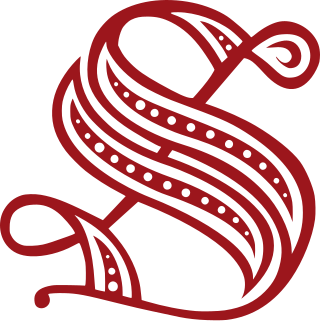
The Italian Parliament is the national parliament of the Italian Republic. It is the representative body of Italian citizens and is the successor to the Parliament of the Kingdom of Sardinia (1848–1861), the Parliament of the Kingdom of Italy (1861–1943), the transitional National Council (1945–1946) and the Constituent Assembly (1946–1948). It is a bicameral legislature with 600 elected members and a small number of unelected members. The Italian Parliament is composed of the Chamber of Deputies, as well as the Senate of the Republic.
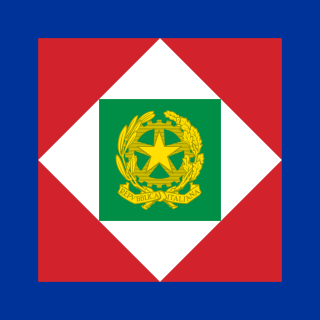
The president of Italy, officially titled President of the Italian Republic, is the head of state of Italy. In that role, the president represents national unity and guarantees that Italian politics comply with the Constitution. The president is the commander-in-chief of the Italian Armed Forces and chairs the High Council of the Judiciary. The president serves a seven-year term, with no term limits. The incumbent president is former constitutional judge Sergio Mattarella, who was elected on 31 January 2015, and re-elected on 29 January 2022.

The 1999 Italian presidential election was held on 13 May 1999. As a second-level, indirect election, only Members of Parliament and regional deputies were entitled to vote. Carlo Azeglio Ciampi was elected head of state of the Italian Republic, a role of representation of national unity and guarantee that Italian politics comply with the Constitution, in the framework of a parliamentary system.
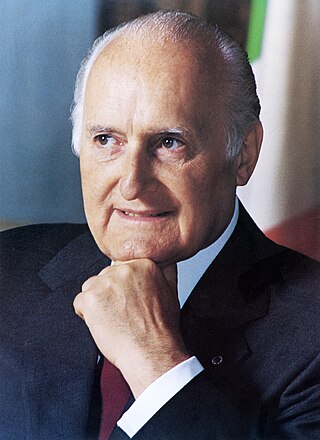
The 1992 Italian presidential election was held in Italy on 13–25 May 1992, following the resignation of President Francesco Cossiga on 28 April 1992.

The 2013 Italian presidential election was held in Italy on 18–20 April 2013. The result was the re-election of Giorgio Napolitano, the first time a president had been elected for a second term.

Laura Boldrini, is an Italian politician and former United Nations official, who served as President of the Chamber of Deputies of Italy. Previously she served as Spokesperson to the United Nations High Commissioner for Refugees (UNHCR) for Southern Europe.

The 2015 Italian presidential election was held on 29–31 January, following the resignation of President Giorgio Napolitano on 14 January 2015. The office was held at the time of the election by Senate President Pietro Grasso in an acting capacity. Only members of Italian Parliament and regional delegates are entitled to vote. As head of state of the Italian Republic, the President has a role of representation of national unity and guarantees that Italian politics comply with the Italian Constitution, in the framework of a parliamentary system.
The mixed group is a parliamentary group active in both houses of the Italian Parliament, the Chamber of Deputies and the Senate. The groups comprise all the deputies and the senators, respectively, who are not members of any other parliamentary group. For them, membership of the Mixed Groups is the default option.

The 1978 Italian presidential election was held in Italy between 29 June and 8 July 1978, following the resignation of incumbent President Giovanni Leone on 15 June 1978 because of the Lockheed bribery scandals.
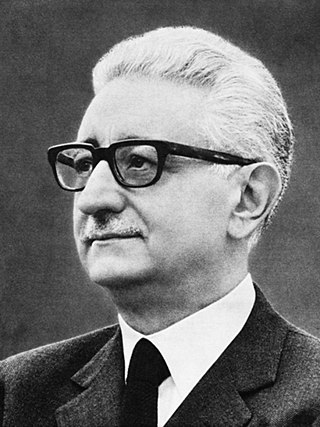
The 1971 Italian presidential election was held in Italy on 9–24 December 1971.
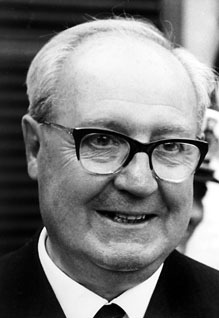
The 1964 Italian presidential election was held in Italy from 16 to 28 December 1964, following the resignation of President Antonio Segni on 6 December 1964 due to health problems.

The 1948 Italian presidential election was held in Italy on 10–11 May 1948. Luigi Einaudi, governor of the Bank of Italy and member of the Liberal Party, was elected as the new President of Italy.

The president of the Senate of the Republic is the presiding officer of the Italian Senate. The President of the Senate is the second highest-ranking office of the Italian Republic.

Free and Equal was a left-wing electoral list and parliamentary group in the Chamber of Deputies and a sub-group in the Senate, the two houses of the Italian Parliament. LeU was launched on 3 December 2017 as a federation of political parties including Article 1, Italian Left and Possible. The leader of the alliance for the 2018 general election was Pietro Grasso, former President of the Senate and former anti-Mafia prosecutor. The three founding parties left the alliance in late 2018, but LeU continued to exist in Parliament. Following the 2021 Italian government crisis, LeU had a single minister, Roberto Speranza, in the national unity government of Prime Minister Mario Draghi.

Valeria Fedeli is an Italian politician, former Minister of Education, Universities and Research in the Gentiloni Cabinet.
